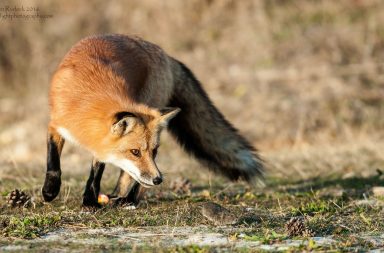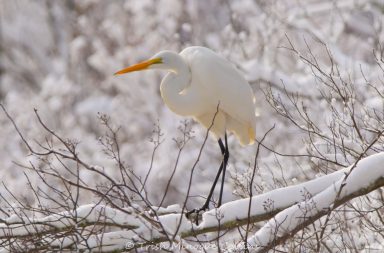DARK-EYED JUNCO
What a sweet little bird! Dark-eyed Juncos visit us in the winter and are often called “Snowbirds”; both because they are winter residents here and also due to their plumage which has been poetically described as “leaden skies above, snow below”.
Dark-eyed Juncos are simply marked; gray/brown head, back and chest, with distinctly separate white belly, two prominent white outer tail feathers on the long notched tail that flash when the bird takes off, and a pinkish bill. Females are duller and browner. There are 12 subspecies of Juncos found in the United States, falling into 6 major groups (all with plumage variations): White-winged, Oregon, Pink-sided, Gray-headed, Slate-colored and Red-backed. “Our” Juncos fall into the Slate-colored grouping.
Dark-eyed Juncos breed further north, commonly in Canada, but spend winters on LI as well as other more southerly states. Migration takes place during March to May and September to December. Highly social and vocal birds, during winter they form flocks of 30 or more birds and are often mixed with other birds like White-throated Sparrows, Chipping Sparrows, and Pine Warblers (Juncos are actually part of the sparrow family).
Juncos feed mostly on seeds and insects, feeding along the edges, hopping along the ground, sometimes scratching through the leaf litter. They are regularly found at bird feeders, foraging on the ground under the feeder. They often exhibit feeding behavior called “riding”, where they land on a seed filled grass or flower stem and “ride” it to the ground with their weight, then feeding off the seeds while standing on the stem. When startled they “explode” into the air, often flying to perches nearby to “assess the situation”. The flashing of the white tail feathers will signal alarm to the rest of the flock. They will often sing during the winter, their song consisting of a rapid, soft, musical trilling varying in length and pitch.
Males arrive first on territory and often sing from tall trees, claiming and defending the same territory each year. Courtship consists of both pair members hopping on the ground with drooped wings, and tail spread showing off the white tail feathers. Nesting almost always occurs on the ground, hidden under logs or overhanding brush. Females mostly build nests, using grass & feathers; 3-5 eggs are usually laid with incubation done by the female, taking 11-13 days. Both parents feed the young, who leave the nest in 9-13 days but can be continually fed by parents for another 3-4 weeks. (If second brood is laid, the male with continue to feed the first hatched young.)
As they return to the same breeding territory each year, they also return to the same wintering areas each year. Their flocks have distinct hierarchy, with adult males being the most dominant, then immature males, then adult females and finally immature females. Watch for dominance displays at your feeders; “pecking-attacks”, lunging, “head-dance” display (where they throw their heads up & down), and flight-pursuits. Due to the lower status of females in the flock, many females continue further south for winter months; 70% of southern US Juncos in winter are female.
Juncos are one of the most common birds found in North America. According to Project Feeder Watch, there are more sightings of Juncos at backyard feeders than any other North American bird. They are widespread and their populations appear to be stable.
Miscellaneous facts: Juncos are documented to interbreed with White-throated Sparrows, longevity for Dark-eyed Juncos is approximately 10 years, they have 30% more feathers (in weight) in winter, and they spend 65% of their time on the ground.
Listen for the lovely winter song of the Dark-eyed Junco … that Junco trilling certainly signifies winter to us here on LI.
The photos below were contributed by members of the Long Island Wildlife Photography Group on Facebook.

Brian McMahon

Cathy Kovarik

Heff Stoppe

Lisa Nadler-Reischer
More images on pages 2 and 3



